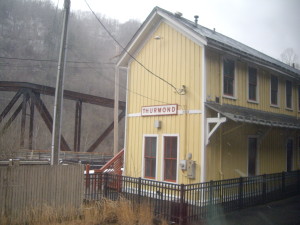In this episode, we explore Folk Tales Involving Trains. By far, the greatest folk hero associated with trains and railroads is John Henry. If you’ve never heard of John Henry, you’re going to discover a legend that touches people deep within their cores and speaks of struggles we all still face today.

Click here to watch Episode 20 of Ramping Up your English.
Episode in Segments: Sorry, Episode 20 is not available in segments. Please see the video clips below. They can lead you to much of what was seen in this episode.
Video Clips
The second clip here has the lyrics posted as Johnny Cash sings. That’s a great way to strengthen your English listening comprehension.
Johnny Cash Legend of John Henry
Johnny Cash Wabash Cannonball
WhiteStone Motion Pictures True Story of John Henry
How John Henry became an American folk hero.
Language Objectives
Utilize listening Comprehension skills to trace the main plot of a folktale (with the context of visual input). Utilize visual and auditory clues (including body language and tone of voice) to recognize new elements of a story as the plot builds on new elements to earlier understanding. Identify the important themes in a folktale.
Social Studies: Power of Narrative: Explain the role of folktales in establishing and furthering a narrative and how that effects public attitudes in national dialogue. Explain the connection of myths with social movements (particularly the Labor Movement in the United States). Labor Movement: Identify the rationale for Labor Unions in connection with worker safety. Industrialization: Explain how mechanization effected workers and how workers struggled to meet the challenges posed by mechanization and how that’s reflected in the folktale of John Henry. Transportation: Illustrate how workers established infrastructure that facilitated the growth of Railroads in the United States.
Lesson: Besides our gorgeous ride along the New River on Amtrak’s Cardinal train, this episode explored folklore connected to the railroad. Understanding folklore can be challenging for second language learners because it often alludes to people and events that are already known by people in the culture of the target language.
For these reasons, I offered a great amount of context, introducing the theme with a folk song. This wasn’t so much to give answers as to inspire questions. If you didn’t understand why this John Henry was such a folk hero, you shouldn’t feel like you failed. We were just hoping your brain would form some questions to help you comprehend the legend as told through the video production.
Between segments of the video clips, I kept asking if you were “with me so far.” Reflecting on small chunks of content help prepare your mind for what comes next. In the classroom, we call this checking for understanding. It builds a mental structure on which to hang the new input. You can apply this approach to understanding any material. It’s a skill that’s essential to both reading and listening in your target language of English, and even in your native language.
Homework
Replay part of the Whitestone production John Herny. Write down what happened in one scene. Don’t be overwhelmed trying to describe too much. Choose a simple theme and do your best to describe it. Use English if you can; or your home language if you must. The main thing is to show your comprehension of the scene.
Next Episode
The lore of trains and railroads carried into Episode 21 as well. Click here to visit the Episode 21 page of Ramping Up your English.